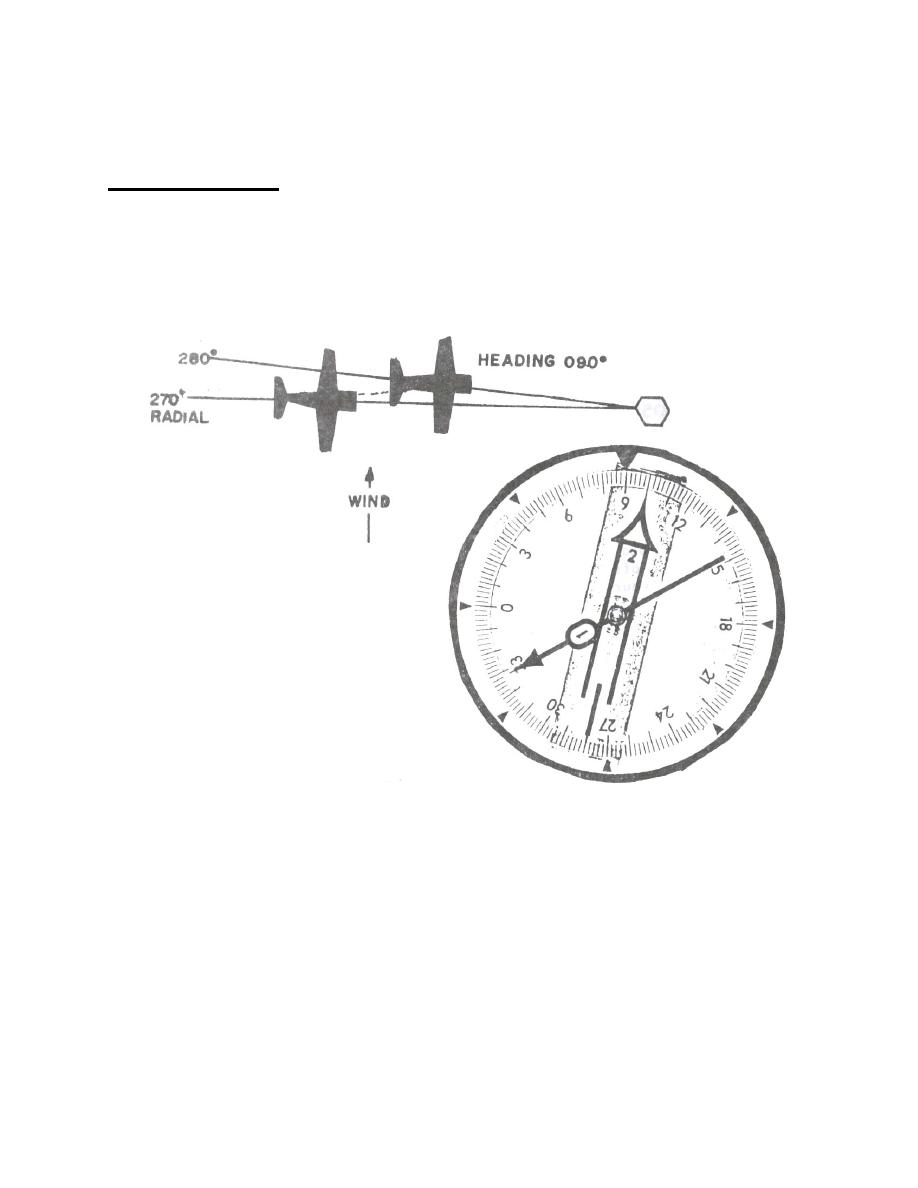 |
|||
|
|
|||
|
|
|||
| ||||||||||
|
|  INSTRUMENT NAVIGATION
In either case, it is important to scan the rate of movement of the needle and develop a feel
for when you should terminate your course correction and turn back to course.
COURSE CONTROL
Now that you know how to intercept the desired radial/course, you must maintain it. Until
now situations have not taken wind into account. When wind is involved, a drift from course
occurs. This is true only if there is a crosswind component. A pure head or tailwind will only
slow you down or speed you up. Thus when you have a wind that is a crosswind, a heading into
the wind (CRAB) is necessary to maintain your radial (course) or else the following happens:
Figure 32
As you can see, you drift off course.
Observe what has happened to the aircraft in Figure 32. The student was trying to maintain
an inbound course of 090: tracking inbound on the 270 radial. His heading was 090. A
wind from his right side pushed him north, and shortly thereafter he found himself on the 280R.
He drifted north of course because he was not compensating for the crosswind. Note the head of
the #2 needle pointing at the direction of crosswind. The head will always point at the
direction of crosswind before you have applied crab to compensate for the crosswind.
RADIAL TRACKING AND COURSE CONTROL 3-23
|
|
Privacy Statement - Press Release - Copyright Information. - Contact Us |